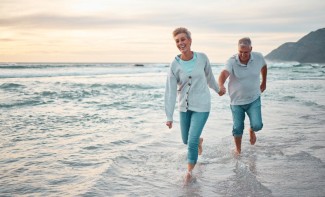
While it seems like it’s summertime year-round here in Hawaii, that also means we’re exposed to the sun more – and now that we know the effects this can have on our skin, including skin cancer and age spots, it’s vital that we effectively protect ourselves.
According to the American Academy of Dermatology, over 2 million people are diagnosed in the U.S. every year with nearly 4 million skin cancers that are not melanoma.1
Even more startling: it is estimated that 1 in 50 Americans will be diagnosed with melanoma by 2050.2 Melanoma is considered by the Skin Cancer Foundation to be the most dangerous and aggressive form of skin cancer.
There are many myths out there about skin care that need to be dispelled, and we’ve identified five of them here:
- Only Fair Skinned People Need Sunscreen—Melanin produces the pigment in your skin. The more melanin a person has, the more helpful it is in protecting the skin from skin cancer and from aging. But the myth that people of color don’t need to take steps to protect themselves is wrong. While Caucasians are more likely to get skin cancer, it can be harder to detect in darker skinned people, and therefore may not be discovered until later stages.3
- The Higher the SPF the Better—SPF 30 protects against approximately 97% of UVB rays; after that, the protection against the other 3% doesn’t go up much. SPF 50 blocks 98%, and SPF 70 protects 98.5%. So, SPF 30 is usually the recommended sunscreen, and should be reapplied regularly.4
From July 10-23, Down to Earth will have selected 4 oz. varieties of Alba Botanica Very Emollient Sunscreen on sale for $8.29, regular price $11.29. - I Don’t Need Protection if its Cloudy—According to the Skin Cancer Foundation, up to 80% of the sun’s rays can penetrate clouds. So slather up or cover up.
- Sunscreen is the Only Way—While sunscreen is a great start, covering up with long sleeves, SPF swim shirts or using hats and staying in the shade are additional ways to protect yourself. Sunscreen doesn’t block out all the harmful sun rays and can wear off if not reapplied in the recommended time.
- Sun exposure will give you adequate Vitamin D—The main benefit of vitamin D is in aiding the absorption of calcium into the bones, and it also regulates communication between cells in the body.
The American Academy of Dermatology’s updated 2011 Position Statement on vitamin D asserts that “there is no scientifically validated, safe threshold level of UV exposure from the sun that allows for maximal vitamin D synthesis without increasing skin cancer risk.” The Academy recommends the public to obtain vitamin D from a healthy diet rich in vitamin D, vitamin D-fortified foods and/or vitamin D dietary supplements. The Academy affirms that vitamin D should not be obtained from unprotected exposure to ultraviolet (UV) radiation from the sun or indoor tanning devices.5 Consult your physician to determine if you are at risk for vitamin D deficiency.
- American Academy of Dermatology, “Skin Cancer”, American Academy of Dermatology.
- Rigel DS, Russak J, Friedman R. The evolution of melanoma diagnosis: 25 years beyond the ABCDs. CA Cancer J Clin. 2010 Sep-Oct;60(5):301-16
- Skin Cancer Foundation, “Skin Cancer and Skin of Color”, Skin Cancer Foundation.
- Skin Cancer Foundation, “Does a Higher SPF Sunscreen Always Protect Your Skin Better?”, Skin Cancer Foundation.
- American Academy of Dermatology. Academy issues updated position statement on vitamin D. Retrieved on June 17, 2014.